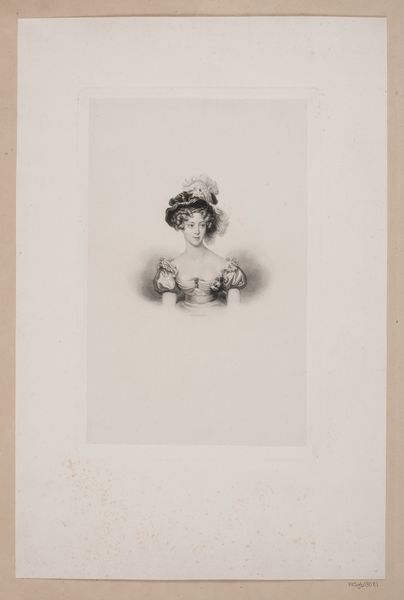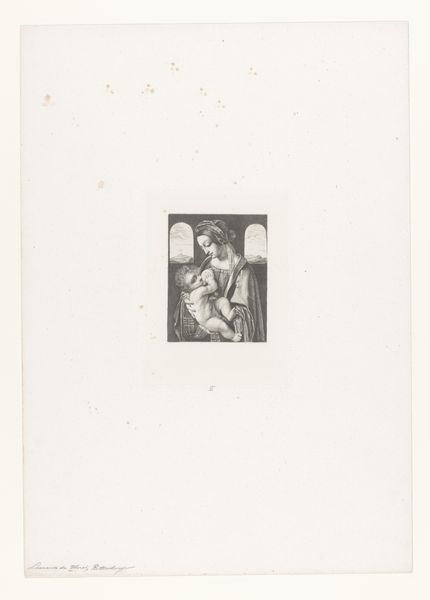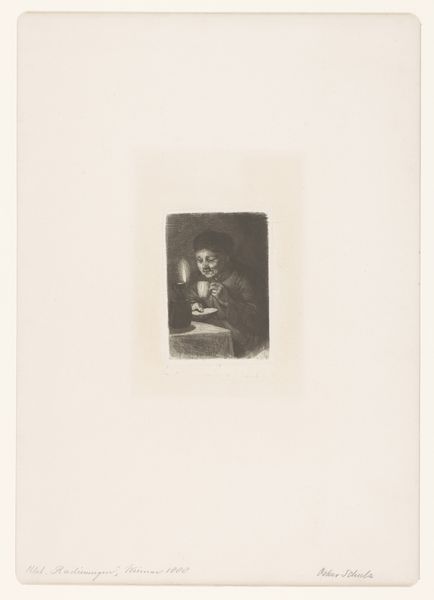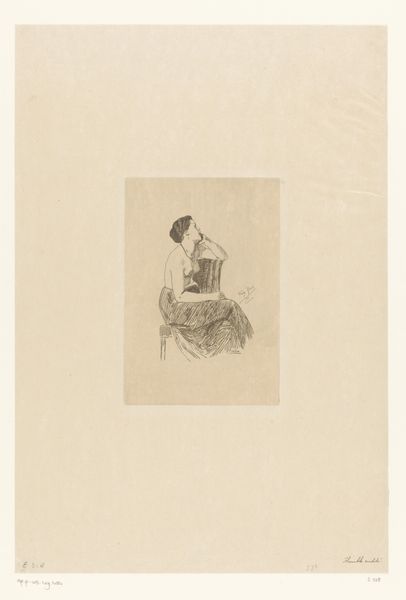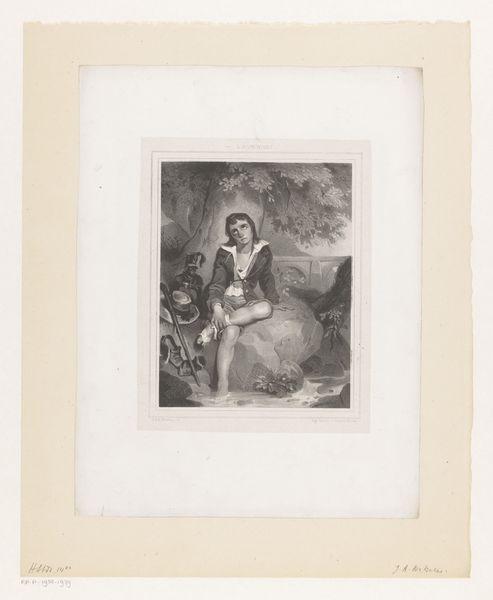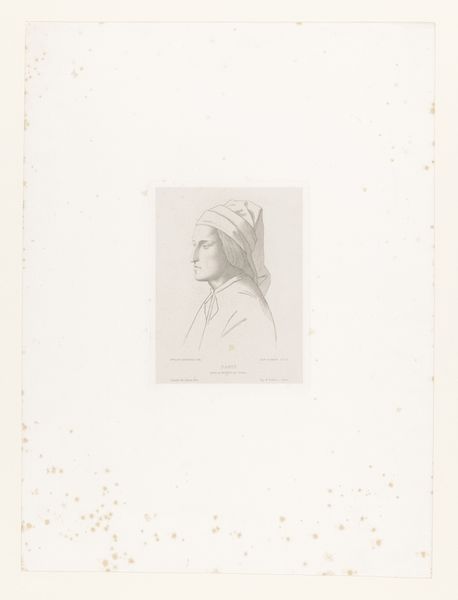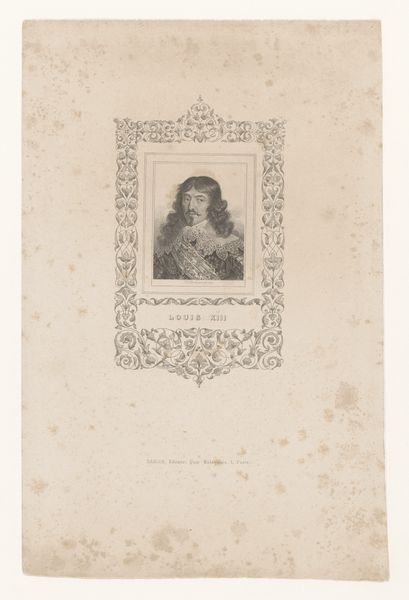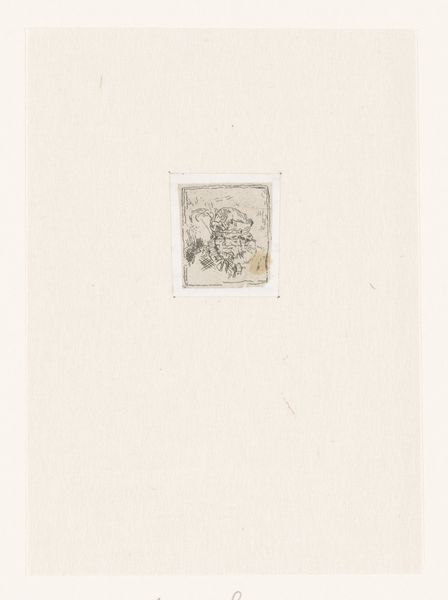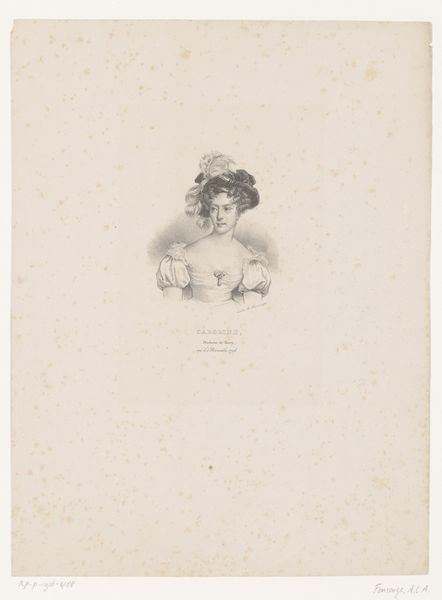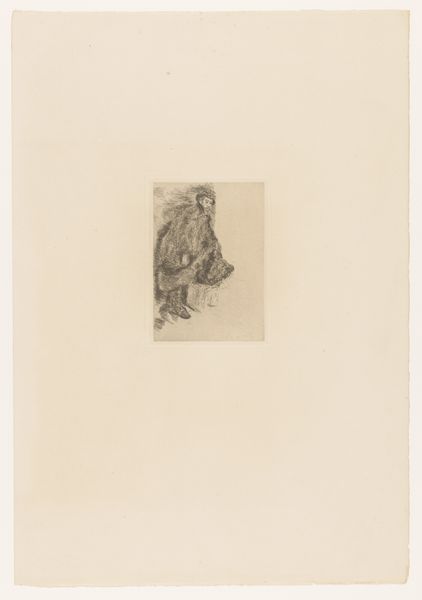
Dimensions: height 113 mm, width 68 mm
Copyright: Rijks Museum: Open Domain
Curator: Looking at this lithograph from the 1850s by Jean Vincent Marie Dopter, it feels immediately mournful, doesn’t it? The pale greys and the ornate border seem to create an atmosphere of melancholy and respect. Editor: Indeed. The artwork presents "Portret van Louise Marie van Orléans, koningin van België." Considering the timeframe, we must look at how monarchy as a construct reinforces class and power structures and how that filters into our visual representation of such figures. Curator: Certainly, this portrait speaks volumes about the performative aspect of monarchy. Look at how she's presented. It's not merely a depiction; it's a construction of idealized femininity and power meant for public consumption. Her expression is controlled, suggesting piety, framed by an ornate border of angelic figures, furthering an almost saintly representation. Editor: Precisely. Consider the function of the Romantic style itself during this period. Its emphasis on emotion and individualism serves to ennoble her, diverting attention away from the realities of political power and toward the aesthetic of royal suffering and beauty. And lithography, a more easily reproduced medium, enables broader circulation of this carefully crafted image to promote the Belgian monarchy. Curator: That’s fascinating how the method of print allows a visual idea of Queenship to circulate, solidifying notions of Belgian national identity with Louise-Marie as its symbolic heart. The contrast between the queen and the cherubic, fantastical frame only emphasizes the rigid, yet celestial expectation of monarchy. This begs a question of performative burden and responsibility in constructing feminine icons. Editor: I agree; and thinking about audiences who were encountering these widely distributed prints: Did this image invite any public discourse? Did ordinary citizens find connection to these portrayals of a queen? Was she successful at solidifying the symbolic connection you speak of? The context surrounding production and consumption is paramount to assess visual culture from this moment. Curator: Absolutely. These questions about spectatorship show the intersectional ways art functioned then, but continue to be important questions now. What does it mean to revisit this work today, as our perception of power and gender is vastly different? Editor: Perhaps we view her not just as a queen, but as a woman caught in the intricate web of monarchical expectations, and then, how do we read and reflect on such expectations for those in power today.
Comments
No comments
Be the first to comment and join the conversation on the ultimate creative platform.

